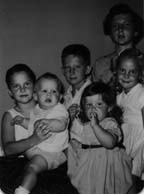 |
Wescott Genealogical Information |
The Ancient Westcott Family in England
We have included some general information to give a feel of the English ancestry. (See The Ancient Westcott Family in England and The Antiquarian Westcott Family in England that follows.) The First Generation In America Three brothers, Richard (who was the oldest, living approximately 1588 to 1651), William, and Daniel were born in Great Torrington, Barnstaple Bay near The Field of Wescote in the Devon area of England. They arrived in America in 1635, prior to the arrival of their uncle, Stuckley Westcott. Much research has been done on Stuckley and his family and we are able to "latch" on to that. (See STUKELY WESTCOTT - FIRST GENERATION IN AMERICA, Talk by Eleanor Wescott Trismen, August 8, 1964) There is some question as to the exact relationship of the brothers to Stuckley (uncle, brother?) but the majority of agreement, because of their ages, is that they were his nephews. |
|
The Maine Wescotts Stuckley's family consistently spelled their name Westcott while the three brothers spelled their name Wescott; without the middle t. (From the Westcott Family Quarterly , December, 1948.) Richard and William settled in Newton, (Watertown), Massachusetts, in 1636. That year they went to Wethersfield, Connecticut. William is believed to have become a seafaring man living in Westmoreland County, Virginia, where he died in 1683. Our ancestor, Daniel, (died 1702) settled in Maine, and prior to settling there, his wife, Maria, was a witness in court in 1646. The son of Daniel, Richard (born 1660, died prior to 1724), married (1687) Hannah (or Anna) Haley (born 1670, died after 1725), daughter of Andrew and Deborah (Wilson) Haley. Deborah Wilson was the daughter of Gower Wilson, who came from Scotland to Kittery, Maine, in 1635. Andrew Haley was called "King of the Shoales". He later lived in Kittery and was a ship-builder. He constructed a sea-wall to connect two islands and protect the harbor. The wall was fourteen rods long, thirteen feet high and fifteen feet wide. Haley's Island is named for him. Richard was a mariner of Piscataqua in 1704 when he was the plaintiff in a suit of disorderly conduct and was bound over to York court by Pepperell in 1707. The son of Richard, William (born 1700), married Dorcas Skillings (born 19 June 1710). They settled on "Skillings Hill" in Scarboro, Maine. Samuel Skillings, Dorcas' father, divided his estate equally among all his children. Their son William (born 1730 died 1 February 1825) married (5 February 1757) Margaret Meserve. He is said to have carried the first mail between Portland and Boston and earned the name "Post". During the Revolution he was known by everyone on the road between Boston and Portland and throughout the entire region of Cumberland County, Maine [Gorham is in Cumberland County]. During the Revolutionary War, he was employed by George Washington to carry military dispatches, and carry letters between the soldiers in the army and their friends and families in New Hampshire and Maine. He took a great deal of pride in this responsibility. One day when he was about to start with important dispatches for General Washington he was looking for a stick with which to urge forward his horse. Washington, wanting him to get started, told him to take his own cane, which was more substantial than a switch, and hurry off. "On all great days, more particularly general muster day (military display being one of his hobbies) he usually made his appearance at Gorham village, it being on his way to visit his two sons, Reuben and Edmund, who were settled in the north part of the town. He was the wonder of the young, always polite and courteous, and always with something pleasant to say to all. He always attracted attention, with his erect, stately figure, and fine horsemanship; his Washington cane, which he grasped in the old-fashioned style a few inches below the top; dressed in the old continental style, with cocked hat, single-breasted coat with large brass buttons and standing collar, with long waist and wide skirts; short breeches, high quartered shoes with silver buckles four inches square, long stockings fastened to his breeches at the knee with large silver buckles --- this was his go-out dress, and he never abandoned it during his life." (History of Gorham, Maine) He lived to be 95 years old and was quite a local character. Edmund, the son of "Post", (born 7 March 1769 died 14 Jan. 1836) married (16 May 1793) Hannah Whitlock Morton (born 1779 died 11 Dec. 1835). Edmund was a town officer in Gorham in 1818. He settled in the north part of the town, at White Rock, on a seventy acre lot. Their son James (born 12 September 1795 died 3 April 1870) married (30 April 1815) Dorcas Libby (born 22 February 1798 died 8 February 1849). They lived near Little Falls. We located a death record for James in Dakota County, Minnesota. It is possible that James followed his sons James and Wells L. to Minnesota. James remarried Hannah Hanson (died 1886). We located Dorcas Libby Wescott's tombstone at the Sapling Hill Cemetery in Gorham. From approximately 1636 to 1853 the Wescott's managed to marry into many of the old Maine families. Currently, the Haley, Skilling, Meserve, Morton, and Libby names as well as the Wescott name are well represented in the Gorham, Maine phone book that is 3/4 of an inch thick. There are 44 Wescott families in that book, quite a number for a town of that size. |
|
Minnesota in the 1850's |
|
Minnesota --- Home For a Long Time Minnesota has been home to the Wescotts, the Andersons, the Hilbacks, and finally a Walker who came as a bride from Illinois. But how did they get to Minnesota? The information below comes from They Chose Minnesota, A Survey of The State's Ethnic groups, Edited by June Drenning Holmquist. Our fore-fathers and mothers were typical of so many of the immigrants that the generalizations can be directly pointed to in our family patterns. (i.e. Wescotts landing in Massachusetts going to Maine heading to Minnesota.) Why did they come to Minnesota . . . ? The Old Stock arrived 1635 in Massachusetts from England . The Wescotts---left Maine in the 1850s "By 1854, when the frontier of settlement began to press into Minnesota Territory, two distinct waves could be observed . . .1) the Midlanders and Southerners, fragmented in religion and Democratic in politics . . . and 2) following the chain of Great Lakes . . . the New Englanders, Puritan in religion, Republican in politics. . . The large proportion of Mainites among the Yankees is especially striking. This can be explained by the presence of the lumbering frontier in Minnesota at the time of these migrations. Having begun in northern New England in the 17th century, loggers swept across the Great Lakes states with the advance of population. From earliest times Maine lumbermen dominated the industry. When they reached Minnesota, however, the great forest ended. Beyond lay a sea of grass. By the time the industry made the jump to the Pacific Northwest, many Mainites had taken up farming or entered other occupations in Minnesota. In no other midwestern state was the heritage of Maine so strong. . ." Even though Wells L. and James were descended from Maine farmers, not lumbermen, and Wells L. was trained as a shoemaker, they felt the pull to the new land. The book continues, "A chronicler of the lumbering industry in Minnesota wrote: 'The lumbermen who established themselves at St. Anthony came largely from Maine. . . Maine and Minnesota had much in common. The climate, much of the topography and the natural resources. . .' "I'm from Maine" was all the reference necessary to secure a job in and around St. Anthony in the lumber days Fresh recruits to serve as sawyers, teamsters, and choppers were constantly sought by placing advertisements in Maine newspapers. That state's 'stalwart son's' responded, observed a Maine congressman in 1862, 'marching away by scores and hundreds to the piney woods of the Northwest.'" The Norwegians The Andersons (Egeness)---immigrated 1871 ". . .Minnesota attracted more . . .Norwegians who immigrated between 1825 and 1928 than any other state. It became both a population and a cultural center for Norwegian Americans, and they became its third largest ethnic group. Norwegians began to arrive in the United States in large numbers in the late 1840s, rising in 1882 to 28,500 persons. . . Why did Norwegians emigrate in such large numbers? In the 19th century only the famine-stricken Irish exceeded the emigration rate of the Norwegians. Like other European nations in the mid-19th century, Norway experienced wrenching economic changes and a doubling of its population from 1815 to 1865 . . . declining infant and child mortality rate . . . agricultural output rose . . . but the country was, and is, both mountainous and forested, with little arable land. Job opportunities in its agricultural, fishing and lumbering economy were limited. Many young people were forced to seek day-laboring jobs on the farms of others, while a second, more diverse group called 'husmenn' (cotters), whose rights and duties varied by region, formed a kind of intermediate rural class between the independent farm owners who were called 'bonder', and the day laborers. More intensive cultivation and the colonization of northern Norway supported a 27% increase in the bonder between 1801 and 1855. But at the same time the number of husmenn nearly doubled and day laborers trebled. No massive emigration resulted, however, until the mid 1860s when a combination of overpopulation, food shortages, mechanization, and changing market structures led to farm foreclosures . . . poor crops, coupled with the disappearance of the fickle spring herring run from the Norwegian coasts, resulted in actual starvation. . . With the displaced farm laborers and cotters, they (bonders) found their way to the slowly industrializing Norwegian cities. Information about America and the rich farmlands of its Midwest, however, opened another, more attractive option to these people and led them to consider emigrating. . . Ironically, it may have been the conservatism of the Norwegian farmers that in part prompted them to make the radical decision to move to the New World rather than to Norway's cities. . . By emigrating, they believed, their rural way of life could be maintained without the overpopulation and socioeconomic problems existing at home. Although their motivation to migrate was primarily economic in nature, the rural Norwegians' desire to perpetuate rural life and their distrust of the city provided a cultural background important in the development of the 19th- and early 20th-century Norwegian-American community. In Minnesota Norwegians took land in rural areas, where they clung to traditions and patterns which provided some continuity with the homeland. The parish church, for example, remained the central institution and the rural immigrants, some of whom had been active participants in Norway's social reforms, quickly became involved in the Minnesota political scene." The Hilbacks (Knuteson)---immigrated May, 1893 "Immigrants . . . in the 1890s and early 1900s . . . gravitated to the cities, where they joined migrating rural Norwegian Americans. (Because Die Reitan was already there, John Hilback and Anna Reitan Hilback, Ole's sister, came to Minneapolis.) During the 1880s the Norwegian enclave shifted farther up Washington Avenue to Cedar Avenue, later known as "Snoose Boulevard" because of the large consumption of snuff by its Scandinavian residents. This development was hastened by the establishment of the Scandia Bank in 1883 on the corner of Cedar and 4th Street South. To be near the new bank, many Norwegian merchants relocated in the Cedar-Riverside area, and soon nearly all the businesses there were operated by Scandinavians, many of the Norwegians. The community continued its southward movement, so that in later year South Minneapolis, predominantly Swedish, also became the major domain of Norwegian Americans and their institutions, although some were also to be found in other sections of the city." And finally in 1917 a Walker came to Minnesota as a bride from Illinois. "The movement of Norwegian immigrants to the city changed occupational patterns and blurred regional and national identifications. . . By 1950 the Norwegian America of 1914 was no longer clearly visible in Minnesota. The third and fourth generations considered themselves Americans, spoke English, and increasingly married persons from other ethnic groups. A culture based on class, occupation, or region (such as the Midwest) seemed to have displaced Norwegianness." |
|
Westcott Station From History of Dakota County approximately 1900 "Quite a growth in the settlement of the town was visible during the year 1853. Among the settlers of that year were P. Chapdelan, F. LeBret, Dosite Auge and his son, Treffle, James and W. L. Wescott, T. N. Dailey, Michael Reid, and T. J. McCollum and sons. Mr. Chapdelan bought of Edward Bibaux and Felix Ake, who had come in earlier, the claim in sections 12 and 13, now owned by James Wescott. While at St. Paul, the river rose too high for Mr. Chapdelan to return to his land, and LeBret, taking advantage of this absence, jumped his claim. Mr. Chapdelan then made a claim further south, and lying partly in the towns of Eagan and Inver Grove. James Wescott soon purchased LeBret's claim right, and built a house sixteen feet square, which he occupied with his brother, W. L. Wescott. In the fall of 1854, the latter returned to their former home, in Maine, and brought out his family. James Wescott being at that time unmarried, the brothers continued to live together. Along the route, by their house, there was a large amount of travel, and from the time they began to show the first signs of house-keeping, the Wescotts were besought to entertain the travelers. They were soon forced to make a business of this, and Wescott's inn became famous throughout the country as a traveler's rest. Political conventions were held here at an early day. On one occasion, in 1856, a mass convention assembled there, of which John Van Hoesen, of Hastings, was chairman. Among other features of the affair, speeches and motions were in French, and the worthy chairman was forced to call an interpreter to his assistance. After a few years, W. L. Wescott removed to a claim of his own, while his brother, James, continued to keep public house until 1863. This he did with great success, being unable at times to entertain all who would be his guests. He still occupies his original home, as much distinguished for his private hospitality as he formerly was for hospitality to the public..." Stations "In 1866, a flag station without a depot was established on the line of the Iowa and Minnesota division of the Chicago, Milwaukee and St. Paul railway, near the south-east corner of section 13, on land belonging to James Wescott, from whom the station is named Westcott station..." Post-Office "Westcott post-office was established in April, 1881, and A. Lau appointed postmaster." In another edition of History of Dakota County it is stated that "In 1855 Mr. Thomas (most likely it should read James) Wescott opened his house as a tavern, which is the only one ever in the town. It was called one of the best on the route, and many a weary traveler has thanked his 'lucky stars' that he arrived at Wescott's ere the night set in to expose him to the inclemency of the weather." Oral History The name Westcott station came from "the home in the West" West cote (home). The Chicago, Milwaukee and St. Paul railway purchased the right-of-way for the railroad from James Wescott and proceeded to lay the tracks. However, payment was not made for the land before the first train came through. James sat on a chair on the tracks with a shot gun, stopped the train, and forced it to back up to the last station. When the payment came through the train was allowed to pass. |
| James Wescott
Father of Wells Libbey Wescott Born: September 12, 1795; Gorham, ME; Cumberland County Married Dorcas Libbey on April 30, 1815 in Standish, ME; Cumberland County Remarried Hannah Hanson, Place and date are unknown Died: April 3, 1870; in MN; Dakota County |
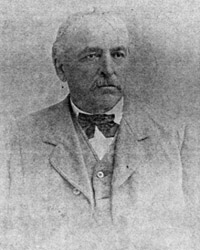 |
James Wescott
Brother of Wells Libbey Wescott Born: October 22, 1823; Gorham, ME; Cumberland County Married Mary E. Atkinson on August 23, 1857 in Farmington, MN; Dakota County Died: May 4, 1910; in Egan, MN; Dakota County |
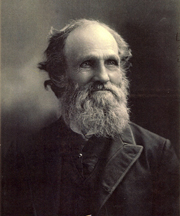 |
Wells Libby (Libbey) Wescott Born: September 4, 1826; Gorham, ME; Cumberland County Married Amanda Hale on February 28, 1849 in Gorham, ME; Cumberland County Died: November 17, 1911; Lakeville, MN; Dakota County |
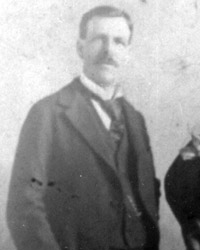 |
Wells Hale Wescott Born: July 13, 1863; Lakeville, MN; Dakota County Married Jane Elizabeth Cockbain on July 30, 1891 in Hastings, MN; Dakota County Remarried Mary Ann Cockbain on March 12, 1895 in Hastings, MN; Dakota County Died: May 18, 1931; Lakeville, MN; Dakota County |
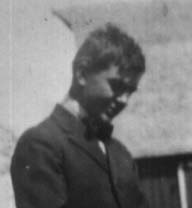 |
Wells Jay Wescott Born: March 3, 1898; Farmington, MN; Dakota County Married Ora Amelia Anderson on December 1, 1915 in St. Paul, MN; Ramsey County Died: July 17, 1920; Kellog, MN; Wabasha County |
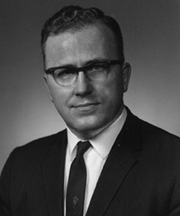 |
Grant Christian Wescott
Born: January 5, 1916; Farmington, MN; Dakota County Married: Irma Grace Batson on December 25, 1941 in Minneapolis, MN Hennepin County Died: October 3 1979 in St. Louis Park , MN; Hennepin County |
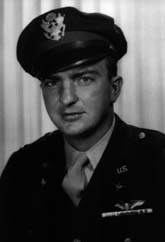 |
Wells L. Wescott Born: February 12, 1920; Lakeville, MN; Dakota County Married Helen Lillian Hilback on June 20, 1942 in Rantoul (Chanute Field), IL Champaign County Died: August 24, 2007 at the Edina Care Center, 6200 Xerxes Ave. S., Edina, Hennepin County, MN, USA at 10:10 am |
|
Bill Wescott's Family Genealogy and more
Genealogical Information Page Favorite Recipes of the Wescott Family |
This Page was last updated on July 20, 2008 |